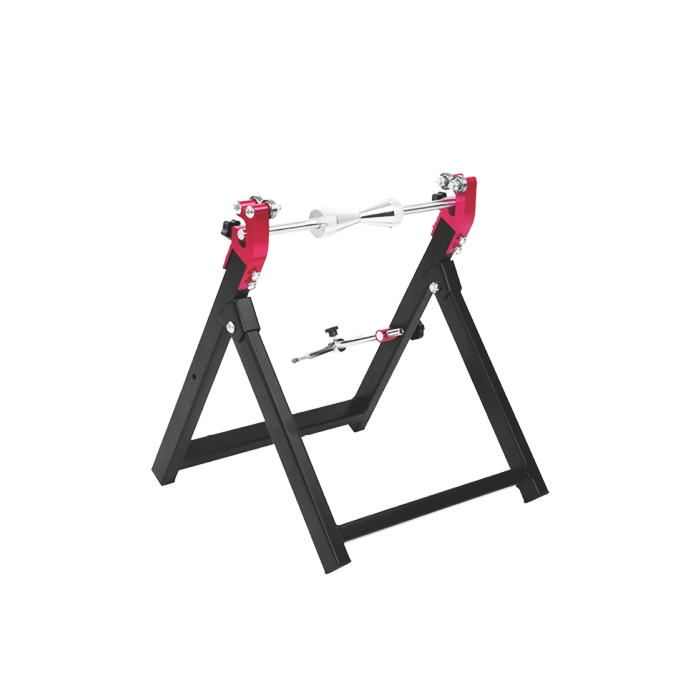The Importance of Wheel Balancing in Motorcycle Maintenance
Understanding the Impact of Unbalanced Wheels
Unbalanced motorcycle wheels can lead to a myriad of issues that affect both the performance and safety of your ride. When wheels are out of balance, they create vibrations that can be felt through the handlebars, seat, and footpegs. These vibrations not only make for an uncomfortable ride but can also cause premature wear on various components of your motorcycle, including tires, bearings, and suspension systems.
Benefits of Proper Wheel Balancing
Regular wheel balancing using a quality motorcycle wheel balancer stand offers numerous advantages. It ensures a smoother ride by eliminating vibrations, which in turn reduces rider fatigue on long journeys. Balanced wheels also contribute to improved fuel efficiency and extend the life of your tires by promoting even wear. Furthermore, proper balancing enhances the overall handling and stability of your motorcycle, particularly at higher speeds, making your rides safer and more enjoyable.
When to Balance Your Motorcycle Wheels
It's advisable to balance your motorcycle wheels after installing new tires, repairing a puncture, or if you notice any unusual vibrations while riding. Many riders also choose to balance their wheels as part of their regular maintenance routine, typically every 5,000 to 10,000 miles, depending on riding conditions and tire wear. By incorporating wheel balancing into your maintenance schedule, you can proactively address potential issues before they become more serious problems.
Step-by-Step Guide to Using a Motorcycle Wheel Balancer Stand
Preparing Your Workspace and Tools
Before beginning the balancing process, ensure you have a clean, level workspace. Gather all necessary tools, including your motorcycle wheel balancer stand, wheel weights, and a wrench for removing the wheel. It's also helpful to have a cleaning solution and cloth to remove any dirt or debris from the wheel that could affect the balancing process. Proper preparation will make the balancing procedure more efficient and accurate.
Mounting the Wheel on the Balancer Stand
Carefully remove the wheel from your motorcycle and inspect it for any damage or irregularities. Clean the wheel thoroughly, paying special attention to the rim where the balancing weights will be attached. Place the wheel onto the motorcycle wheel balancer stand, ensuring it's centered on the spindle. The wheel should rotate freely without any resistance. If your balancer stand has adjustable cones or adapters, use them to secure the wheel firmly in place without overtightening.
Identifying and Correcting Imbalances
With the wheel mounted, give it a gentle spin and allow it to come to a natural stop. The heaviest point of the wheel will settle at the bottom. Mark this point with a piece of chalk or tape. Attach a small weight to the opposite side of the rim, at the topmost point. Spin the wheel again and observe. If the wheel stops in a different position, adjust the weight's position or add more weight as needed. Repeat this process, fine-tuning the weight distribution until the wheel remains stationary in any position when spun. This indicates that the wheel is properly balanced.
Advanced Techniques and Considerations for Wheel Balancing
Dynamic vs. Static Balancing
While the basic method described above is known as static balancing, some riders opt for dynamic balancing for more precise results. Dynamic balancing takes into account lateral imbalances as well as radial ones, providing a more comprehensive balance. This method typically requires specialized equipment found in professional motorcycle shops. Consider your riding style and the type of motorcycle you own when deciding between static and dynamic balancing techniques.
Addressing Specific Balancing Challenges
Certain factors can complicate the wheel balancing process. For instance, wheels with spoke designs may require different balancing techniques compared to solid wheels. Similarly, custom or aftermarket wheels might present unique challenges when using a motorcycle wheel balancer stand. In these cases, it's crucial to consult your motorcycle's manual or seek advice from a professional. Additionally, be aware that some high-performance tires may have a natural heavy spot that needs to be aligned with the valve stem for optimal balance.
Maintaining Balance Over Time
Once you've achieved proper balance using your motorcycle wheel balancer stand, it's important to maintain it. Regular inspections can help you catch any issues early. Keep an eye out for signs of imbalance, such as uneven tire wear or the reappearance of vibrations. Remember that factors like temperature changes, impacts from potholes, or even normal wear can affect wheel balance over time. By staying vigilant and performing periodic checks with your balancer stand, you can ensure your motorcycle continues to perform at its best.
Conclusion
Mastering the use of a motorcycle wheel balancer stand is an invaluable skill for any rider committed to maintaining their bike's performance and safety. By following the steps outlined in this guide, you can ensure your motorcycle's wheels are perfectly balanced, leading to improved handling, increased tire longevity, and a smoother, more enjoyable ride. Remember that wheel balancing is an ongoing process, requiring attention and periodic checks to maintain optimal performance. With practice and patience, you'll become proficient in using your wheel balancer stand, contributing significantly to your motorcycle's overall well-being and your riding experience.
Contact Us
To learn more about our high-quality motorcycle maintenance tools, including our advanced wheel balancer stands, please don't hesitate to reach out to us at info@runva.com.cn. Our team is dedicated to helping you keep your motorcycle in peak condition for all your adventures on the road.

_1737625693698.webp)


